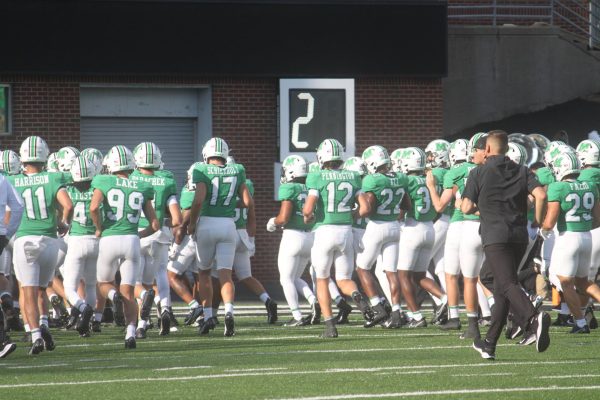University budget structure explained Part: 2
With the rising cost of higher education, the question is often asked, what happens with the money?
Editor’s note: This is the second piece in a two-part story. The first piece can be found on the Parthenon website.
With the rising cost of higher education, the question is often asked, what happens with the money?
“This past year we took a fairly significant hit in changing in assets from a financial perspective,” said Jason Baldwin, Marshall University budget manager.
Baldwin said the budget work group convened to create a plan to reduce the overall budget.
“The budget work group consists of folks here in the budget and finance offices, various faculty and staff and even student representatives across campus. They get together and discuss these ideas and come up with a plan,” Baldwin said. “If you take a look at that budget reduction plan for ’21, that plan was really built by that budget work group. It’s a really good way to get feedback from all of these different faculty and staff groups and individuals.”
With classes moving to virtual and less students on campus due to coronavirus, universities have had to adjust their budgets to accommodate losses.
“We do have a capital fee, a fee paid, in state code of what we charge for facilities,” Baldwin said. “I’m thinking if housing specific, even with auxiliary revenue for the dorms, I know there is some pressure there because we’ve had students defer or choose an alternative instruction method.”
Due to a lower number of students on campus, some utility costs have been lower, but the budget department said there are still contracts that have to be kept.
“We might have some reduced utility cost if the dorms are being used less,” said Katrina Eskins, Marshall University budget director. “But we don’t have any large ability to reduce housing stuff, so we’re still paying all these housing expenses. Students just didn’t come on campus, so they didn’t pay the housing fees and the meal plans, but we still have to maintain our contract with Sedexo.”
Eskins said the while some revenue activity is down, they still have staff.
“I don’t know that there is particular revenue throughout the school year because those costs are with your tuition,” Eskins said. “Activities where we have ticket sales, we can curtail those activities to some extent where ticket sales are less, but definitely the revenue for activities and things are down more than cost is down because we still have all our staff.
While a raise in tuition can be done to supplement lost revenue, Baldwin says Marshall is working to avoid that step.
“The budget office and the budget work group will definitely work as hard as we can to minimize any impact on a tuition increase,” Baldwin said. “I think that’s an important point and that’s a directive that President Gilbert has charged not only our office, but that budget work group with.”
Baldwin said one reason they try to avoid tuition increases is it reduces the affordability of higher education for West Virginian families and President Jerry Gilbert agrees.
“Handling a higher education budget is complicated every year, but even more so in a year with a global pandemic and possible cuts to the budget from the state,” Gilbert. “Our team at Marshall makes every effort to manage our budget without raising tuition because it means fewer and fewer West Virginia families can afford college for their children. It’s my hope we don’t have to significantly raise tuition, but unfortunately, it is something we have to consider when other sources aren’t available.”
Eskins said they look at several areas to tighten costs, including employee turnover.
“Our primary source of being able to hold cost is to hold back on positions as they become vacant, as staff and faculty turnover,” Eskins said. “If we just look more closely, hold more tightly on those vacant positions and maybe even realign duties, but that’s our basic source, our biggest source to hold back cost.”
The majority of the budget is labor and also where the majority of savings can be found, Baldwin said. He also said the budget reduction plan tried to keep as many student jobs as possible.
While Marshall works on the budget for 2022, they are still waiting to see how money from the third federal stimulus is to be dispersed.
Brittany Hively can be contacted at [email protected].
Your donation will help continue the work of independent student journalism at Marshall University. If you benefit from The Parthenon's free content, please consider making a donation.






